Results
-
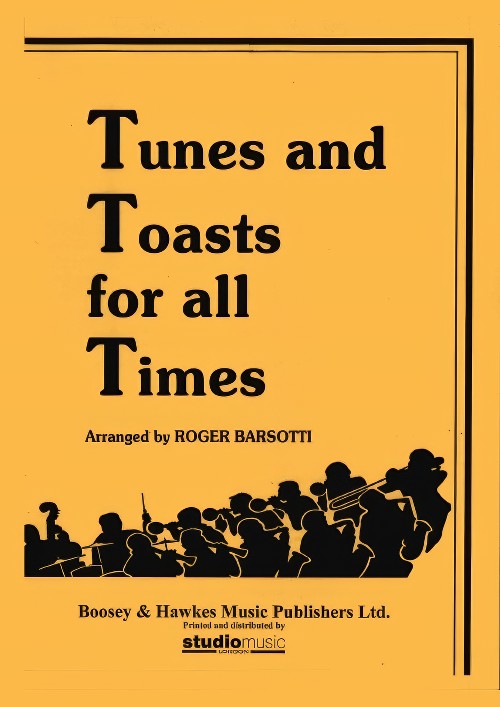 £199.95
£199.95Tunes and Toasts for all Times (Wind Band Value Set) - Barsotti, Roger
Wind Band set includes:Concert Flute & Piccolo x2Eb Clarinet x1Oboe x11st Bb Clarinet x22nd Bb Clarinet x13rd Bb Clarinet x1Bassoon x11st Eb Alto Saxophone x12nd Eb Alto Saxophone x1Bb Tenor Saxophone x1Eb Baritone Saxophone x11st Bb Cornet/Trumpet x22nd Bb Cornet/Trumpet x13rd Bb Cornet/Trumpet x11st & 2nd Horns in F x13rd & 4th Horns in F x11st Trombone x12nd Trombone x1Bass Trombone x1Euphonium (BC) x1Bass x2The Piano Conductor Score and Drums are available separately.Titles:ENGLISH AIRSA fine old English GentlemanA-hunting we will goBritish GrenadiersCherry ripeClementineCome, lassies and ladsDrink to me onlyDulce DomumDrunken sailor (The)For he's a jolly good fellowFarmer's boy (The)Floral DanceFrothblowers' AnthemGirl I left behind me (The)Here's a health to all good ladiesHere's a health unto her MajestyHere's to the maidenJohn PeelKeel row (The)Love's old sweet songMarch of the Fire BrigadesMistletoe bough (The)On Ilkla MoorPrincess Royal's Red Cross marchRoast beef of old EnglandSir Roger de CoverleySee the conquering hero comesSoldiers of the QueenThere is a tavern in the townNAUTICALHeart of oakHornpipeLife on the ocean waveShenandoahRed, white and blue (The)Rule, BritanniaSCOTTISH AIRSAnnie LaurieAuld lang syneBonnie banks of LochBonnie DundeeBlue-bells of ScotlandCampbells are coming (The)Charlie is my darlingFlowers of the forestHundred pipers (The)Highland LaddieRobin AdairScotch ReelScots wha haeWill ye no come back againYe banks and braesIRISH AIRSCome back to ErinDanny boy (Londonderry air)Harp that once through Tara's hallIrish Washerwoman (The)KillarneyMinstrel boy (The)Oft in the stilly nightOff to PhiladelphiaSt. Patrick's DayWELSH AIRSAll through the nightAsh grove (The)Bells of AberdoveyDavid of the white rockLand of my fathersMen of HarlechAMERICAN AIRSCarry me back to old VirginnyDixieGood-night (shine, shine, moon)John Brown's bodyMarching thro' GeorgiaOld folks at home (The)Star Spangled BannerTramp, tramp, tramp, the boys are marchingWhen Johnny comes marching homeYankee doodleCANADA AlouetteMaple leaf (The)O CanadaAUSTRALIAWaltzing MatildaSACRED AIRS & CAROLS Abide with meEternal Father strong to saveO God our help in ages pastFirst Nowell (The)Good King WenceslasO come all ya faithfulWhile shepherds watchedJerusalemSupreme sacrifice (The)Dead march in SaulPARADES (All organisations)General saluteSlow march or troop "Scipio"Troop "May-blossom"FANFARES, etcDeclamatory No. 1Occasoinal Fanfare No. 2"Reveille""Retrear""Last Post"Galop from "Orpheus in the Underworld"God save the Queen (in B flat)God save the Queen (in F)
Estimated dispatch 7-14 working days
-
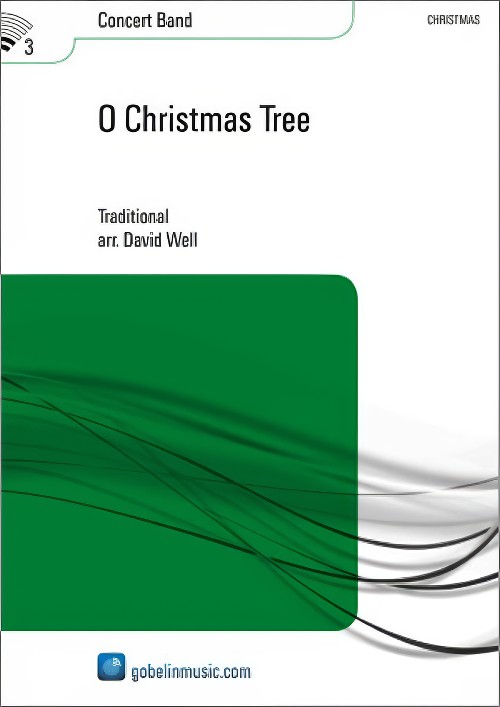 £94.99
£94.99O Christmas Tree (Concert Band - Score and Parts) - Well, David
The tradition of the Christmas tree in Western Europe dates back to a time long before any Christianization had taken place. During the severely cold winter nights, so it was believed, evil spirits tried to 'kill' nature. Needle-leaved trees were the only ones which kept their green colour throughout the year, and therefore became symbols of immortality. These 'living' trees, said to be the work of benign spirits, were brought into people's houses to ward off evil, life-threatening powers. In the 14th century people first started to decorate Christmas trees. It was a pagan custom, originated by the inhabitants of Alsace. This custom was taken over by the Church in the course of the 15th and 16th century. At first the decoration consisted mainly of edibles, such as apples and wafers, but later small presents were added. Legend has it that the reformer Martin Luther was the first person to decorate a Christmas tree with candles. The flickering candle flames were meant to create the image of a starry sky in which Christ's apparition could be recognized. The German organ-player Ernst Anschutz from Leipzig was the first person to notate the song 'O Tannenbaum', the melody being a well-known folk song. Next to 'Stille Nacht' 'O Tannenbaum' is the most famous German Christmas song, now known throughout the world. In the United States of America the melody of 'O Tannenbaum' has even been used in four States (among which the State of Maryland) for their State song. In David Well's arrangement the song is first heard as many of us know it. After this introduction, however, it is transformed into a solid rock version, and the beat has been changed. In the second part the familiar three-four time is back, but here the rhythm is different from the original. After the richly ornamented rock beat the basic theme can be heard once again and the composition is concluded in a festive manner.Duration: 3:15
Estimated dispatch 7-14 working days
-
 £82.80
£82.80Solemnity - Alexandre Carlin
Solemnity was composed when the composer came back from his first Midwest Clinic in Chicago. Inspired by all the concert bands performing there, and all the fellow composers met at this occasion, he decided to write a kind of fanfare work, leading to a fast theme on a driving rhythm.The piece begins like a fanfare with a solemn character which gives the title of the work, the brass here have a nice part to play. Then, a new theme full of energy, using the same rhythmic motive as the fanfare theme, is exposed by the high woodwinds and finally by more instruments. The central part is a slow one, where a melancolic theme is exposed by the oboe, and finally the rest of the band. After a fugato section, the energic theme is back to lead to a brilliant coda.
Estimated dispatch 7-14 working days
-
 £179.99
£179.99Outback - Thomas Doss
This work was commissioned by the "-sterreichische Blasmusikjugend" (Austrian Brass Band Association - Young Musicians).The Aboriginal indigenous people of Australia are among the oldest surviving human cultures. The arrival of the Europeans markedtheir decline and endangered their existence. The many secrets the Aborigines hold served as inspiration for this work. Aboriginal SpiritOver many centuries, the Aboriginal people have cultivated a unique ability to live in harmony with theworld around them. Maintaining the delicate balance between their trinity - nature, man, and creation - is an important factor for bliss and happiness.Primeval Sound and Dreamtime The tens of thousands-year-old stories from the era calledDreamtime - the Aborigines' creation myth - play an important role in not only their beliefs, but their everyday lives and laws as well. Ancestral worship and various other rituals and ceremonies are still held in high regard to this veryday.Running HunterThe Aborigines are extremely skilful hunters and are able to run for extended periods of time when chasing their prey. Hunting weapons, such as the boomerang, exemplify their abilities.Uluru (Red Rock)Uluru, also knownas Ayers Rock, is a natural sandstone "inselberg" rising 348m above Australia's plains, and is one of the country's most recognisable icons. Uluru is also a sacred place for the local Aborigines. Its history stretches back to Dreamtime, although itdid not exist in its current state at that time.Encounter with the White MenUnfortunately, the "White Men" did not realize the significance and importance of the Aborigines and their culture until the end of the 20th century. Before then, theywere unaware that the Aborigines were quite possibly one of the oldest known cultures on earth, with a seamless history stretching back to creation itself; Dreamtime. BushfireFire has been present on the Australian continent for millions ofyears. Many of the indigenous flora and fauna have needed to adapt to fire, and evolution has led to unique solutions for survival. Over time, a complex symbiotic relationship has grown between life and the continually returning bushfire.
Estimated dispatch 7-14 working days
-
£67.50
Space Probe - James L. Hosay
Now your band can boldly go where no band has gone before, and bring the "final frontier" to your concert band stage! Here's James L. Hosay's imaginative new tone poem SPACE PROBE. Since the 1970's, NASA has been launching long-range, solar-powered probes into space. Over the past 30 years, the Voyager, Pioneer, and Galileo series' probes have sent back incredible photographs. The data sent to Earth by these probes, along with recent photos and information gathered by the orbital telescope, Hubble, has helped astronomers chart the ever-expanding universe all the way back to its origins. This composition provides excellent opportunities for cross-curriculum teaching withscience. A scintillating musical spacescape ushers in the bold thematic statement in the Trumpets and Alto Saxophones. French Horns join in thrilling variation. A boundless contrasting espressivo theme soars through to the reprise of the initial ideas. Explore SPACE PROBE with your band this year. Inspiring!
Estimated dispatch 7-14 working days
-
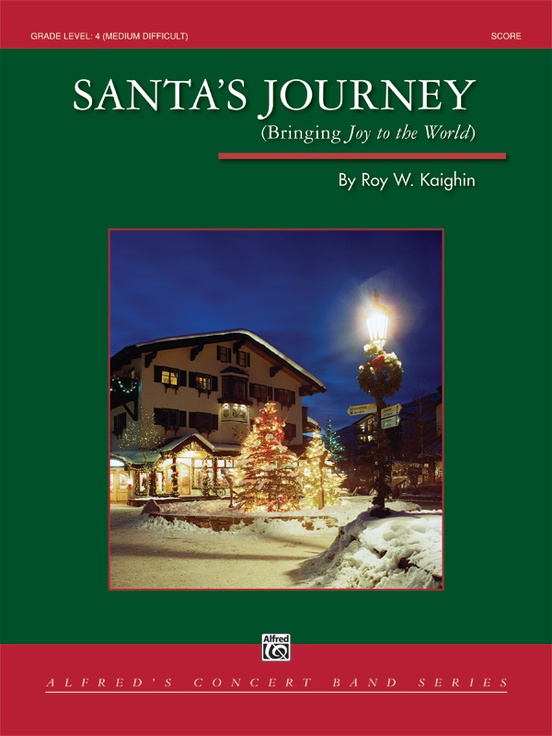 £77.50
£77.50Santa's Journey - Roy W. Kaighin
As Santa starts his journey, bringing "Joy to the World" by delivering presents to children and adults, he sets off on his majestic sleigh driven by his reindeer. A few elves have snuck into the sleigh to help. With a whoosh, he flies across the sky and over the snowy mountains. The music is in continuous motion, just like Santa's sleigh, as he has many presents to deliver before morning. The quiet moments in the music depict Santa's arrival in small villages, away from the hustle and bustle of the big cities, touching the hearts of people everywhere. During his journey, Santa discovers the elves who have apparently lost some of the presents. Santa offers a gentle reprimand before the presents are eventually found by Elfie, the youngest Elf. After all the presents have been delivered, Santa heads back home as he calls out, "I'll be back next Christmas!" (4:15)
Estimated dispatch 3-5 working days
-
£87.50
Arabia - Joseph Benjamin Earp
"Arabia" is based on the legend of Atlantis, a lost city in ancient Arabia. This mysterious city was buried under the sand after being destroyed by natural disasters said to be unleashed by angry Gods. Many explorers seeking the lost city believe it is near the southern deserts of modern-day Saudi Arabia. Sit back and imagine you are transported back to this amazing ancient city.
Estimated dispatch 7-14 working days
-
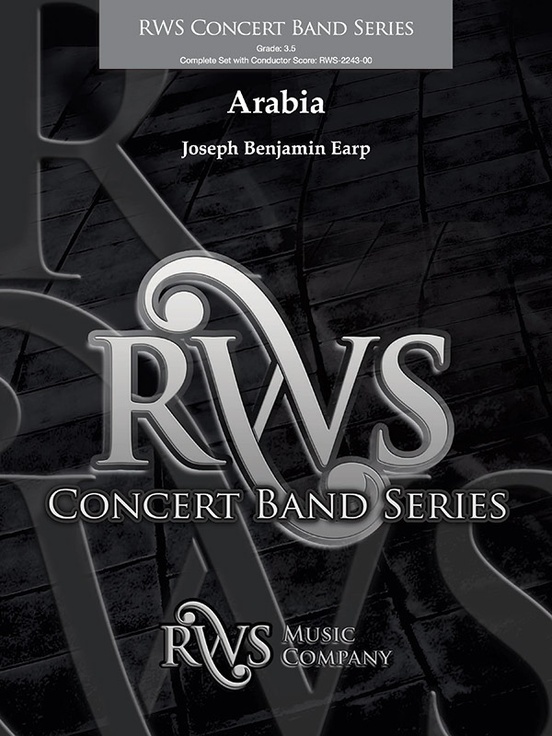 £87.50
£87.50Arabia - Joseph Benjamin Earp
"Arabia" is based on the legend of Atlantis, a lost city in ancient Arabia. This mysterious city was buried under the sand after being destroyed by natural disasters said to be unleashed by angry Gods. Many explorers seeking the lost city believe it is near the southern deserts of modern-day Saudi Arabia. Sit back and imagine you are transported back to this amazing ancient city.Original Item#: RWS-2243-00
Estimated dispatch 3-5 working days
-
 £82.50
£82.50Outpost - Ky Hascall
A musical tale of a lone watchman, vigilant at his outpost by the desolate sea. His quiet thoughts of home and loved ones are soon displaced by the sudden appearance a fleet of invaders. The tempo increases as the ships draw near and he sounds the alarm; soon the battle is on! Aggressive music reflects the fierce conflict as both sides push back and forth before the battle turns in favor of the village guard. As the invaders sail back into the night, the watchman returns to his post and the quiet sounds of the waves, his thoughts of home returning as he sets his gaze on the horizon once again.
Estimated dispatch 7-14 working days
-
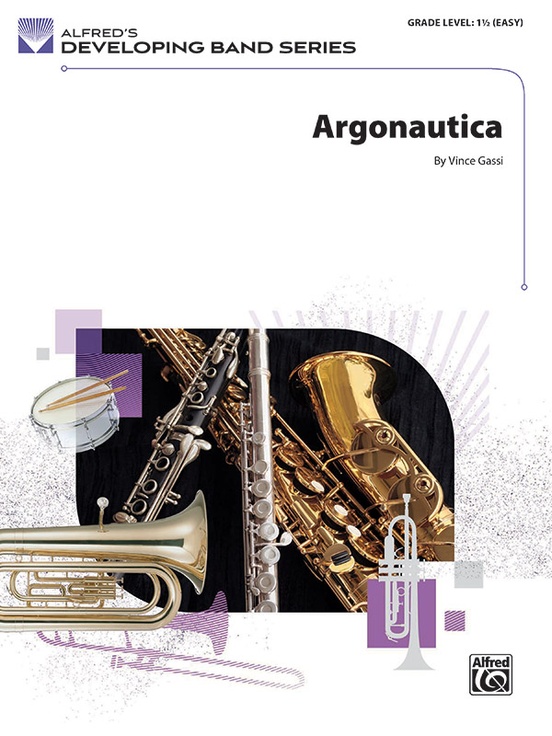 £53.95
£53.95Argonautica - Vince Gassi
, the epic quest of Jason and the Argonauts, is the inspiration for this work. Feel the wind at your back and let Vince Gassi's nautical themes, energetic rhythms, and bold harmonies take you back to an ancient epoch. (2:15)
Estimated dispatch 3-5 working days
